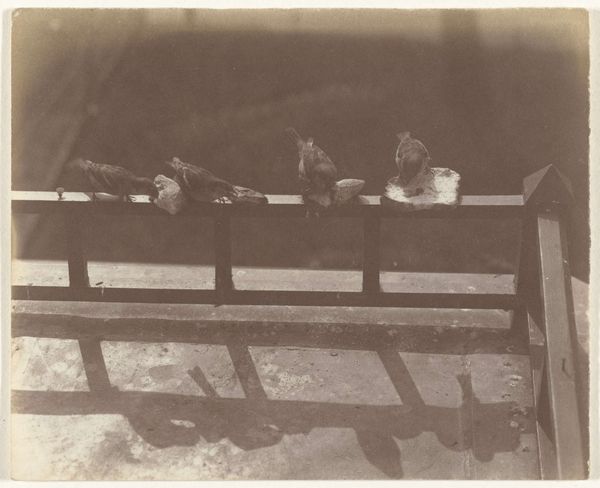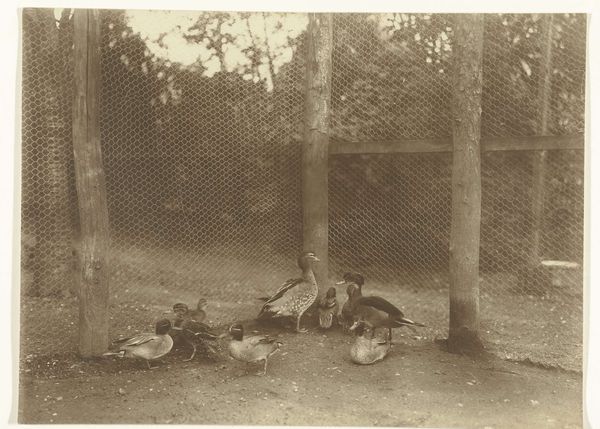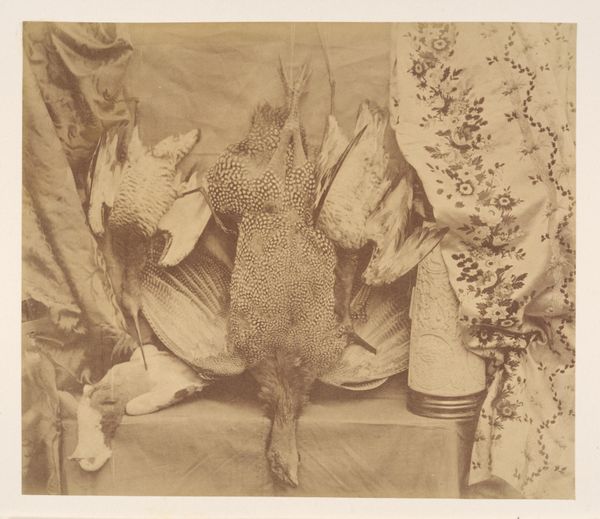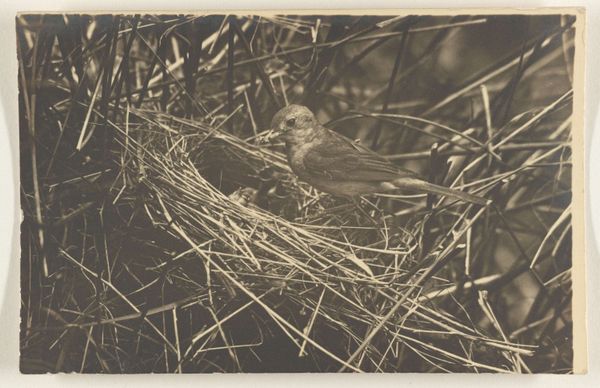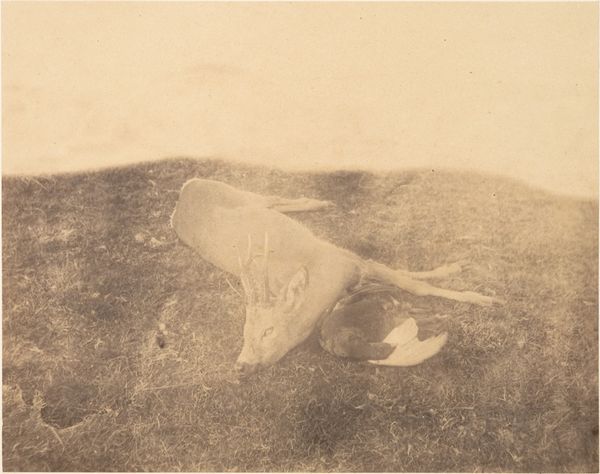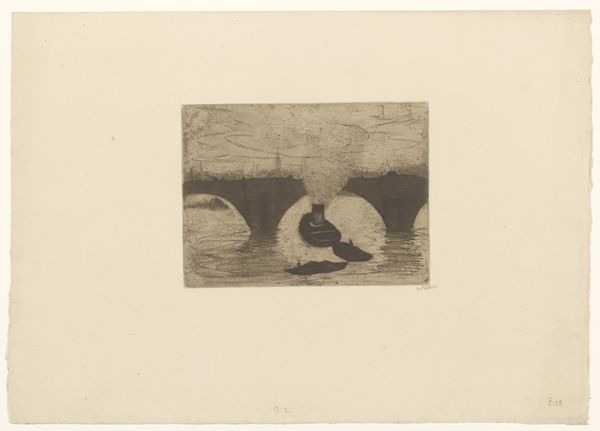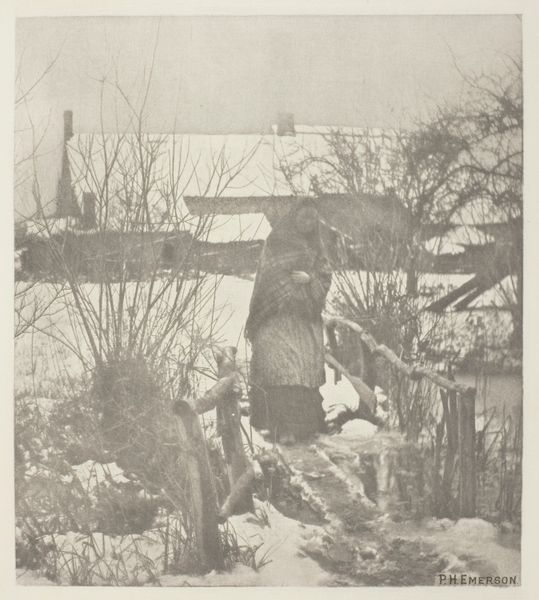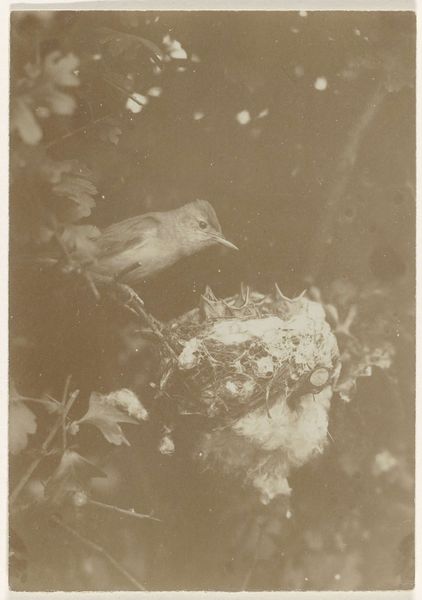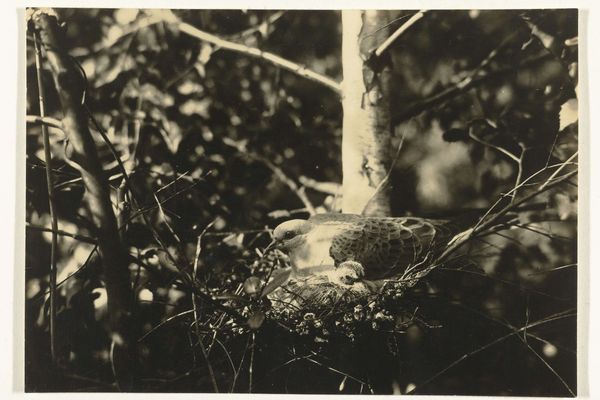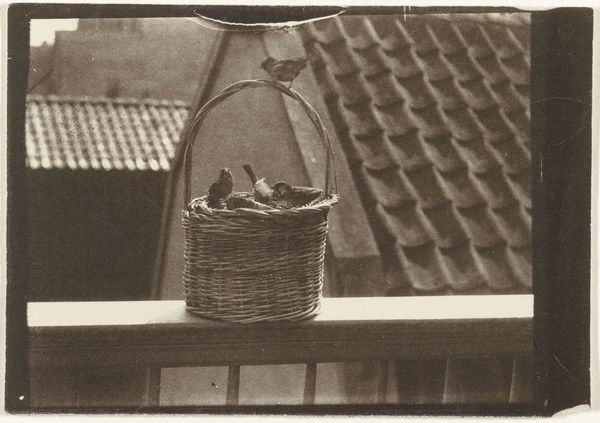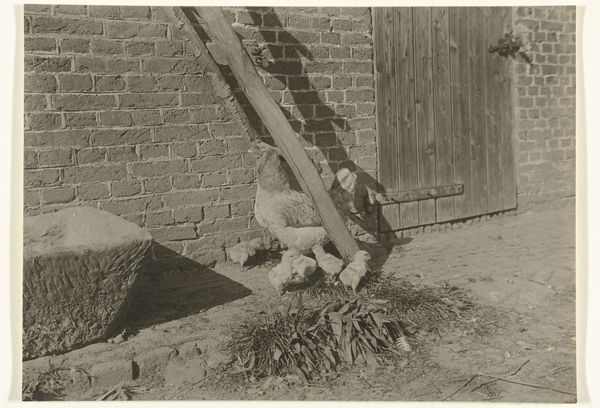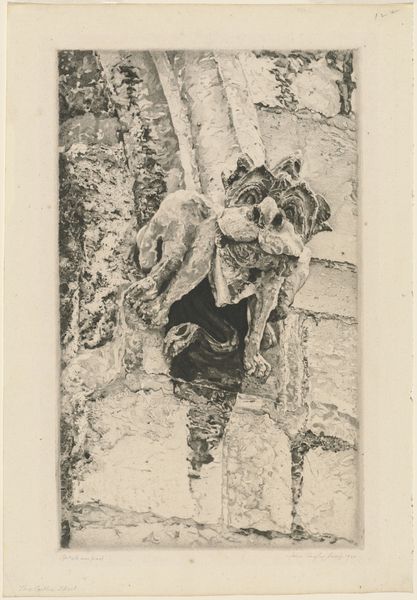
Dimensions: height 101 mm, width 120 mm
Copyright: Rijks Museum: Open Domain
Editor: We're looking at Richard Tepe's photograph, "Sparrows at a Dish of Food," taken sometime between 1900 and 1930. It has this beautiful, almost dreamlike sepia tone. It makes me feel nostalgic. The birds huddled around the food look very vulnerable. What strikes you most about this image? Curator: I see a gathering, a commonplace scene elevated through the camera's gaze. These birds, captured in a moment of shared sustenance, echo older traditions of symbolic representation. Bird imagery carries cultural weight - freedom, vulnerability, the soul's journey. Notice the stark shadows contrasting with the soft focus. Do they remind you of a symbolic struggle or tension, perhaps between instinct and circumstance, vulnerability and resourcefulness? Editor: I hadn’t thought of it that way, but I see what you mean. The sharp shadows do create a feeling of being caught, almost trapped. Curator: The photographer likely selected the elevated viewpoint for a reason. It provides the audience with an overview of the natural world of birds. How does seeing the world from above affect your interpretation of it? Editor: It's interesting how the ordinariness of birds feeding transforms into something more profound, maybe about community and shared experiences. Curator: Precisely. Even in this unassuming image, Tepe manages to tap into something timeless. Consider how such photographs build cultural memories, connecting us to the lives—both human and animal—of those who came before. The very act of photographing something so ordinary implies a wish to memorialize and interpret, wouldn't you agree? Editor: Yes, absolutely. I initially saw a simple scene, but now I see a story filled with symbolism and connections to a shared past. Curator: Indeed. These sparrows, through Tepe’s lens, become vessels carrying centuries of human meaning.
Comments
No comments
Be the first to comment and join the conversation on the ultimate creative platform.
